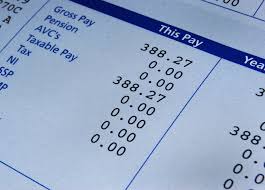Everything You Need to Know About Payroll Deductions
Need information about the payroll deductions you see on every paycheck? Knowing what they are and why they exist is important for your understanding of your compensation. Knowing about payroll deductions lets you understand why your paycheck may not have been as much as you expected.
Payroll Deductions Are Mandatory or Voluntary
Payroll deductions are either mandatory or voluntary. Knowing the difference and why these deductions exist will explain why your salary is not the same as what you are paid. If you have additional questions after reading through this information, your Human Resources department is your best resource. They can answer your questions about your compensation, paycheck, and payroll deductions.
Mandatory Payroll Deductions
The employer is required by law to withhold payroll taxes from an employee’s gross pay prior to issuing a paycheck to comply with government regulations. Employers who fail to follow the law on mandatory deductions are open to lawsuits, fines, and even, going out of business.1
As an employee, you just need to understand what’s going on.
These are the mandatory payroll deductions for taxes:
- Federal income tax
- State taxes
- Local (city, county) income tax withholding in some areas. (Other local taxes can include school district taxes, community college taxes, state disability or unemployment insurance, for example.)2
The second set of mandatory payroll deductions are for FICA (Federal Insurance Contributions Act) taxes that include:
- Social security taxes and
- Medicare tax withholding.

Gross pay vs. net pay
Deductions and withholding make up the difference between gross pay and net pay. Gross pay is the total amount your employee earns from their salary or hourly wage plus any bonuses, commissions, and other forms of compensation. For example, if you pay employees twice a month, a salaried employee who makes $48,000 per year will earn $2,000 in gross wages each pay period. This gross pay is where most calculations start for the IRS’s “wages subject to withholding” for employee paychecks.
Some payroll withholdings are mandatory payroll taxes; other deductions are voluntary, meaning your employee has the option to not pay them. Many voluntary deductions like health insurance or 401(k) contributions are pre-tax deductions that have the effect of reducing an employee’s taxable gross pay. Once withholdings and deductions have been made, the remaining net pay is what you pay to your employees.
Withholding vs. Deductions
Withholdings and deductions are often treated as synonyms on your paystubs. Technically, though, the term withholding refers specifically to federal or state taxes that you take out of your employees’ paychecks and send to the government. All withholdings are mandatory.
Deductions are usually voluntary, and they include opt-in retirement savings, health insurance, or donations. There are also some involuntary deductions, like when wages are garnished to pay back taxes or child support. Some deductions are pre-tax, meaning they reduce your gross wages for tax calculations. Others are taken after taxes have been withheld. Don’t worry if this is confusing — we’ll take a closer look at specific deductions below.
Withholdings and deductions have two crucial elements in common: taking out the correct amount for each employee and then sending these funds to the proper tax agency or service provider.

The Deduction Types Commonly Used in Payroll
- Health Insurance – Medical, Dental and/or Vision health premiums are voluntary deductions that are held back from an employee’s paycheck, assuming that the employee is participating in the health insurance program. These can be spread out over the course of employment and deducted with each payroll, or deducted once a month.
- Short-term & Long-term Disability – If you provide your employees with Short-term & Long-term disability coverage, it ensures that your employees still receive a percentage of their salary in the event of an accident that leaves them disabled, temporarily or permanently. This deduction type would be used to collect employee premiums towards this insurance.
- Life Insurance – This deduction is used if an employer provides life insurance coverage, and your employees have signed up to receive basic term life insurance protection through the workplace. The premiums associated with the coverage are deducted from an employee’s pay, unless the employer is paying the premiums on behalf of the employee.
- Supplemental Life Insurance – Typically, company-sponsored life insurance plans tend to be pretty basic, one-size-fits-all type of plans. As such, your employees might want to get some additional life insurance coverage. If this supplemental insurance coverage is being purchased through the workplace, your employee gets the benefit of better rates (it’s not always guaranteed though), and this deduction type would be used to collect the premiums associated with this insurance.
- Dependent Life Insurance – This type of insurance coverage protects you in the case of a financial loss that results from the loss of a dependent spouse or child. If your employee is paying for this additional coverage, you can use this deduction type to deduct the premiums directly from an employee’s payroll.
- Accidental Death & Dismemberment (AD&D) – Based on the type of accidents that are covered in the plan, AD&D insurance gives your employees additional protection in the case of an accidental injury or death. The premiums for this type of coverage can be based on your salary or a specific set amount.
- 401(k) / Registered Retirement Savings Plan (RRSP) – If your employees want to put aside some money for their retirement, they can do that through a 401(k) / RRSP plan. This deduction type would be used to manage employee contributions if the amounts are being deducted directly from their payroll.
- Profit-Sharing – This type of a plan works as an excellent incentive to motivate and retain employees because it gives them a chance to really participate in the company’s financial success. Profit-sharing plans did not always include a component of employee contribution; however, this is becoming more commonplace. Employees have certain limits to the amount they can contribute towards a profit-sharing plan.

Payroll Deduction Plan Explained
Payroll deduction plans offer employees a convenient way to automatically contribute income toward an ongoing expense or investment. For example, it is common for employees to deduct a set percentage of income and contribute it to their traditional Individual Retirement Account (IRA) or Roth IRAs. An employee may also choose to have the premiums from an insurance policy deducted from their pay, ensuring that payment is never missed.
Some payroll deduction plans may also involve the voluntary, systematic payroll deductions to purchase shares of common stock. In such cases, the employee opts into their employer’s stock purchase plan and a portion each paycheck goes to buying shares of their employer’s stock, generally at a discounted price. In an example provided by the Securities and Exchange Commission (SEC) regarding the Employee Stock payroll Deduction Plan at Domino’s Pizza, Inc., eligible employees may opt to allocated 1-15% of their paycheck to buying company stock priced at 85% of fair market value of the date the option is exercised.
Accrue.
This means to build up or accumulate. As part of a compensation package, many employers offer paid vacation, sick, and personal time. There are many ways to provide this time. Often employers choose to allow the employee to earn (or accrue) a certain amount of time per pay period. Others may give a bulk amount at one time.
ACH (Automated Clearing House).
This is an electronic network for processing direct deposits and other payroll transactions.
Base pay rate.
The rate that has been agreed upon to be the starting point for employee earnings. This can be an hourly rate, a daily rate, a piece rate, or salary per pay.
Deductions.
Deductions are amounts taken from the employee’s paycheck (not to be confused with taxes). These can be voluntary amounts that the employee chooses, such as health insurance premiums, retirement plan contributions, and miscellaneous deductions, or involuntary deductions, such as a child support order or a tax garnishment. These items can be considered pre-tax or post-tax, depending on the actual deduction.
EFTPS.
This stands for the Electronic Federal Tax Payment System. It’s used for an employer to pay federal taxes online.
Employee’s Withholding Allowance Certificate (W-4).
Federal Form W-4 or state equivalent is where the employee states the number of withholding allowances claimed to determine income taxes to withhold from the employee’s compensation.
Exempt.
Amounts that are not considered part of the taxable compensation. These amounts would be subtracted from the gross pay (total compensation) before the calculations of each applicable tax are completed.
Example: Employee contributions to a 401(k) plan are considered exempt from federal income tax. The contribution amount for that paycheck is subtracted out before the calculation of the Federal Income Tax (FIT) is done.
